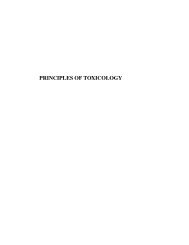Insect-pests - Biology East Borneo
Insect-pests - Biology East Borneo
Insect-pests - Biology East Borneo
Create successful ePaper yourself
Turn your PDF publications into a flip-book with our unique Google optimized e-Paper software.
22 <strong>Insect</strong> Pests and Diseases of Major Plantation Species<br />
fungus, Fusarium solani, invades the root system,<br />
destroys the root hairs, the finer rootlets and the<br />
bacterial nodules, and travels a short distance along<br />
the stem, clogging vessels and tissues in the sapwood<br />
(which develops pinkish brown stain) and stopping<br />
the flow of sap to the crown and finally causing the<br />
tree to die. Although this appears to be a serious<br />
disease, no incidence of this disease has been reported<br />
in Indonesia since the first episode in 1973. As<br />
Dalbergia ssp.have been grown successfully in<br />
Indonesia for a long time, more critical study is<br />
needed on the differential susceptibility of D. sissoo<br />
and D. latifolia to F. solani wilt.<br />
4.7. Dipterocarpaceae<br />
(Dipterocarps)<br />
Indonesian common names: Meranti, Balau,<br />
Sengkawang, etc.<br />
Natural forests in Indonesia are dominated by<br />
dipterocarps but they have not received much attention<br />
as plantation species. Apart from experimental plantings<br />
in West Java since the 1950s, most planting has been<br />
enrichment planting of logged-over forests using<br />
wildlings. There is renewed interest in dipterocarps and<br />
plantations are being established, mainly in the provinces<br />
of West, Central, <strong>East</strong> and South Kalimantan, South<br />
Sumatra and Jambi (see Fig. 2.1). In addition, Perum<br />
Perhutani intends to use them to replace poor pine<br />
plantations in West Java.<br />
The species planted are mainly Shorea and<br />
Dipterocarpus spp. The genus Shorea consists of many<br />
species commercially grouped on wood characteristics<br />
into red meranti, white meranti, yellow meranti, balau<br />
and red balau. Most Shorea spp. have been tried in<br />
experimental plantations and the relatively fast-growing<br />
S. leprosula, S. selanica, S. javanica, S. smithiana and<br />
S. parviflora are receiving more attention. The rates<br />
of growth of these species differ between regions but<br />
S. leprosula grows faster in most places. In cooperation<br />
with Japanese plantation companies (Japan is the main<br />
importer of Indonesian dipterocarp timber), FERDA<br />
(Forestry and Estate Crops Research and Development<br />
Agency of Indonesia) and some universities have<br />
compared the performance of Shorea spp. seedlings<br />
and rooted cuttings and established experimental<br />
plantations. There will be about 500 ha of plantations in<br />
West Java and Sumatra (Riau and Jambi), mostly S.<br />
leprosula and S. selanica.<br />
<strong>Insect</strong> <strong>pests</strong><br />
Major insect <strong>pests</strong> recorded on dipterocarps are listed in<br />
Table 4.3. Various species of weevils (Coleoptera) and<br />
small moths (Lepidoptera) attack the seeds when the<br />
fruits are on the tree and after they are shed (Curran and<br />
Leighton 1991). They damage 40-90% of seeds of<br />
several Shorea spp., Dipterocarpus cornutus and Hopea<br />
odorata (Natawiria et al. 1986). Nursery seedlings of<br />
Shorea leprosula and S. parviflora in <strong>East</strong> Kalimantan<br />
are killed by gall forming mites (Rahayu et al. 1998). In<br />
Sumatra, a sap-sucking bug, Mucanum sp. (Hemiptera,<br />
Pentatomidae) kills Shorea javanica seedlings in nurseries<br />
(Intari 1996) and the sap-sucking cicada, Lawana<br />
candida, is an occasional pest of 7- to 9-year-old S.<br />
leprosula in <strong>East</strong> Kalimantan (Rahayu et al. 1998).<br />
Unidentified bagworms and other caterpillars have caused<br />
serious damage to 5-7-year-old trees of several Shorea<br />
spp. in <strong>East</strong> Kalimantan (Rahayu et al. 1998). The<br />
polyphagous caterpillar Calliteara cerigoides is a serious<br />
defoliator of dipterocarps in Indonesia (Messer et al. 1992,<br />
Matsumoto 1994). The species attacked include Shorea<br />
leprosula, S. pinanga, S. selanica, S. stenoptera, Hopea<br />
mengrawan and H. odorata. Some defoliated saplings of<br />
H. mengrawan succumbed to the damage. Minor leaf<br />
damage by caterpillars and scarabaeid beetles has been<br />
noticed in plantations of S. leprosula and S. selanica in<br />
West Java (K.S.S. Nair, unpublished observations).<br />
Termites attack living dipterocarps and may cause death<br />
of trees (Nuhamara 1977; Elouard 1998).<br />
Diseases<br />
Several fungi, including Cylindrocarpon sp. and<br />
Curvularia sp. attack dipterocarp seeds and reduce<br />
germinability. Seedlings and saplings suffer leaf spots,<br />
root and collar rots, defoliation, and darkening of root<br />
and twig bark, caused by a variety of fungi, notably,<br />
Fusarium spp. (Table 4.4). Information on fungi on<br />
dipterocarps in Indonesia and the diseases they cause<br />
is available in Elouard (1991, 1998). Gall formation on<br />
shoots of seedlings and saplings of Shorea spp. is<br />
attributed to the bacterium Agrobacterium tumefaciens<br />
in Java, Sumatra and Kalimantan and an insectvector is<br />
suspected (Elouard 1998). Recently, Rahayu et al.<br />
(1998) noted a similar disease resulting in abnormal<br />
tissue proliferation (prolepsis) and stunting of Shorea
















